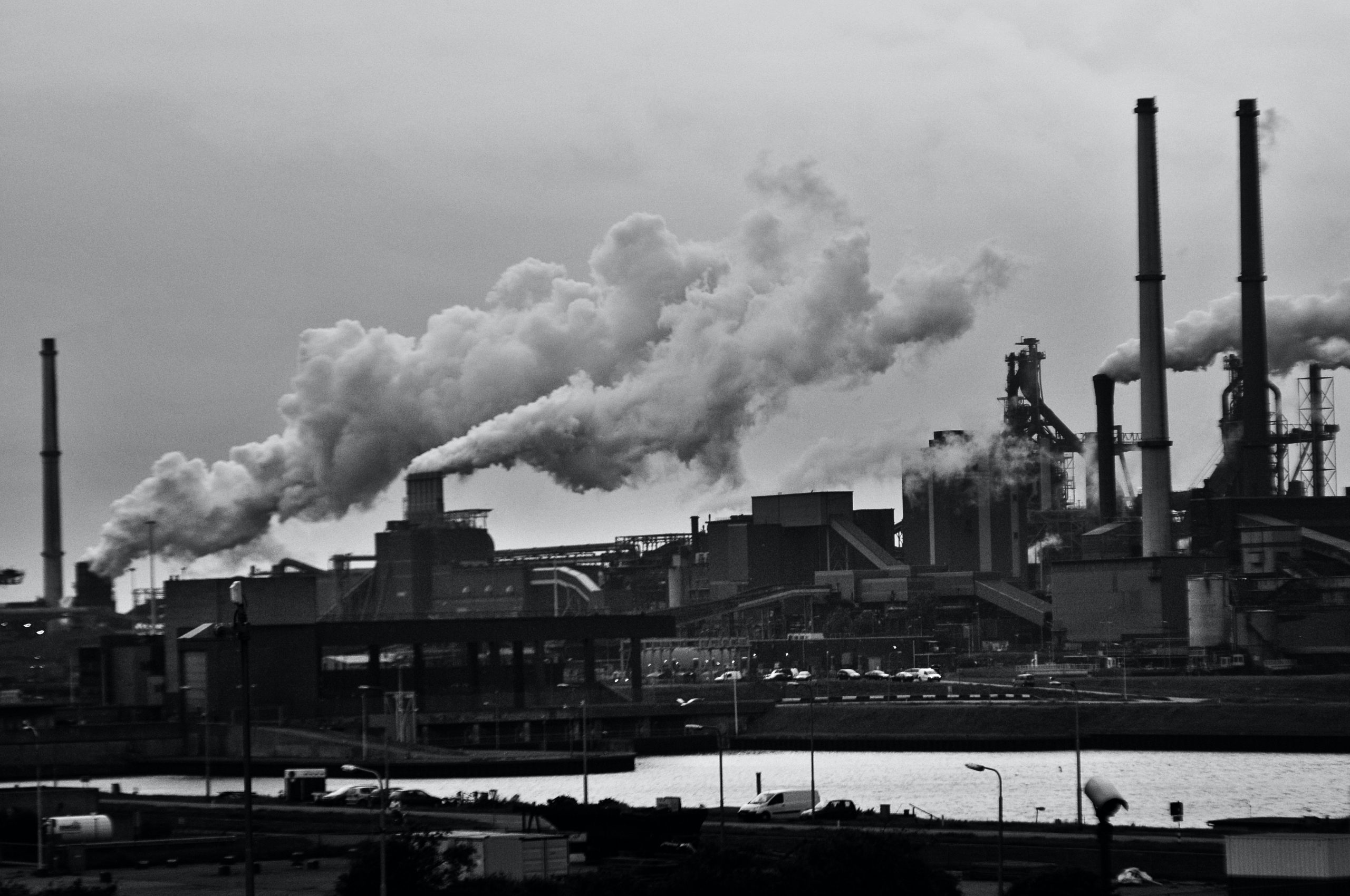One of the main sources of air pollution due to industrial and vehicle emissions is nitrogen oxide (NO) produced from the reaction of nitrogen and oxygen in the air by the equilibrium reaction

which, at room temperature, is regulated by the equilibrium constant Kc = 4,8 ‧ 10−31.
At low temperatures the NO concentration is low, but at high temperatures, for example, those produced by car engines during the combustion of gasoline (highly exothermic reaction), the balance of the reaction moves towards the products, in accordance with the Le Châtelier principle, and the NO concentration increases. Air pollution caused by NO is due to the fact that the nitrogen oxide, which leaves the engine with the other exhaust gases, cools so rapidly that it is not able to complete the reverse reaction whose speed, at low temperatures, is slower.
You might think that the concept of pollution has been created in recent decades and that people have been dealing with it relatively recently; but it has been object of attention for centuries and it dates back to the times of the ancient Romans who coined the word inquinamentum to indicate garbage and dirt and pollution.
Like art (see the page about Turner), also literature has dealt with pollution in a more or less conscious way, and already in 1759 Giuseppe Parini (1729-1799) wrote about it in the poem “La salubrità dell’aria”. In this poem, the author describes the eighteenth-century Milan as an environment full of stagnant water that produces foul-smelling mud, open-air sewers for sewage directly discharged from windows and with dead animals abandoned everywhere. Parini, opposing the polluted and stinking city to the clean, lush and healthy countryside, points the finger at society that does not care about the public good and highlights how important is the collective good.
Charles Dickens (1812-1870), during the Industrial Revolution, deals with pollution in the novel “Hard Times” (1854), which tells of the problems of an imaginary industrial city, Coketown (“town of coke”). But Coketown is not so fictional, because Dickens’ description actually depicts a real town of his time, perhaps Manchester itself: “It was a town of red brick, or of brick that would have been red if the smoke and ashes had allowed it; […] It was a town of machinery and tall chimneys, out of which interminable serpents of smoke trailed themselves for ever and ever, and never got uncoiled”. The inhabitants of this city are oppressed by the black smoke and soot of industrial chimneys that choke their breath and pollute the water they drink with serious consequences for their health.
Dickens becomes the spokesman of the great contradiction of the industrial era: although it has brought wealth, new comfort and social well-being, it actually causes greater poverty and harmful pollution.
However in 1909, between the works that condemn pollution, there is also a voice against the current. We are talking about the Manifesto of Futurism that celebrates pollution as an exalting symbol of modern progress, such an important aspect of human life that air contamination is forgotten or overshadowed.
More recently, Italo Calvino (1923-1985) in the long story “La nuvola di smog” (1958), deals with environmental issues. The author tells how the protagonist, a journalist who moved to Turin, a highly industrialized city, becomes aware of the cloud of smog that sees from the top of a hill looming over the city. Calvino describes the smog cloud that spreads everywhere, soils environments, clothes, roads: “ […] era insomma un’ombra di sporco che la insudiciava tutta e ne mutava – anche in questo era diversa dalle altre nuvole – pure la consistenza, perché era greve, non ben spiccicata dalla terra, dalla distesa screziata della città sulla quale pure scorreva lentamente, a poco a poco cancellandola da una parte e dall’altra riscoprendola, ma lasciandosi dietro uno strascico come di filacce un po’ sudice, che non finivano mai”.
In this story, even though studies on pollution have not yet been published, the farsighted Calvino points out that the dangers of pollution will cost a high price that society is already paying and that it will continue to pay in the future.
There are many writers and poets, both Italian and foreign, who have dedicated themselves and who are still writing on the subject of pollution. They call unanimously for incisive solutions that will preserve the planet and its inhabitants.
ACTIVITY: Do a research and create a Power Point presentation where you list and describe all the chemical pollutants in the atmosphere and their effects on human health.

